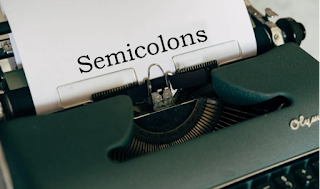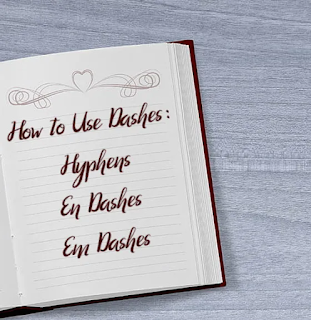Punctuation Time: Semicolon Specifics
Note: This article was originally published May 17, 2020 on my now-defunct website for AMA Creative Solutions. I have completed the most minor of edits, so what you see is what was published (barring a glaring and obnoxious error).
Semicolons act as a middle point between commas and periods. They can connect two closely related sentences, separate complex lists, and separate individual ideas in complicated sentences. One of the biggest complaints I hear from students about reading social theory, older literature, and philosophy is that the sentences make the ideas too difficult to follow. These writers tend to have long, winding sentences with several clauses separated by semicolons and commas. I tend to recommend using semicolons sparingly, but many writers & editors have distinct stylistic preferences and the rules can change depending on your (or your audience's) region.
Here are some general rules to follow when using semicolons. As always, double-check your style guide for unique semicolon uses and how to manage grey areas when you are writing professionally.
Connecting Independent Clauses
Use a semicolon when two clauses form a complete sentence (both clauses have a subject and a verb) and are closely related
NOTE: You should not use a conjunction (words like and, but, so, for, yet) after the semicolon. If you prefer to use a conjunction, use a comma instead.
Example: The internet was down at my apartment; I had to complete the application at the library.If you are using a conjunction and there is punctuation in one of the clauses, you can use either a comma or a semicolon to separate them. This exception shows your reader where the clauses break and can help keep your writing easy to understand.
Example: We rewarded Jane, Chase, Andi, and Mark for exceeding customer expectations and sales goals; but they work remotely, so we weren’t able to have our usual staff luncheon to commemorate them.If you are using a conjunctive adverb (these are words that link verbs like similarly, subsequently, meanwhile, nevertheless, however) or transitional phrases (such as after all, in other words, on the contrary, for example), you would use a semicolon after the first clause and a comma after the transitional expression.
Example 1: I was going to go for a walk; however, the rain kept me home.
Example 2: They thought she would be excited by the surprise birthday party; on the contrary, she seemed really upset by it.If you are using a transitional phrase that comes in the middle of a clause, the semicolon should be placed between the clauses.
Example: Most of the students were nervous about the exam; Sandra, for instance, was reviewing her notes until
the moment the instructor started distributing the test.
Lists
Semicolons are used to separate lists that include punctuation, such as commas or hyphens. This helps the reader know how the list is separated.
Example: One of the key themes in Victorian Gothic literature is the blend of the supernatural and scientific advancement, such as you can see in Mary Shelley’s Frankenstein, or a Modern Prometheus; Bram Stoker’s Dracula; and Robert Louis Stevenson’s The Strange Case of Dr. Jekyll and Mr. Hyde.
References
Hacker, Diana. 2007. A Writer’s Reference, 6 ed. Boston, MA: Bedford/St Martins. Pp. 273-276.
Grammarly Blog https://www.grammarly.com/blog/semicolon/
GrammarBook.com https://www.grammarbook.com/punctuation/semicolons.asp
Writer’s Relief “Three Essential Semicolon Rules” https://writersrelief.com/2008/03/16/three-essential-semicolon-rules/



Comments
Post a Comment